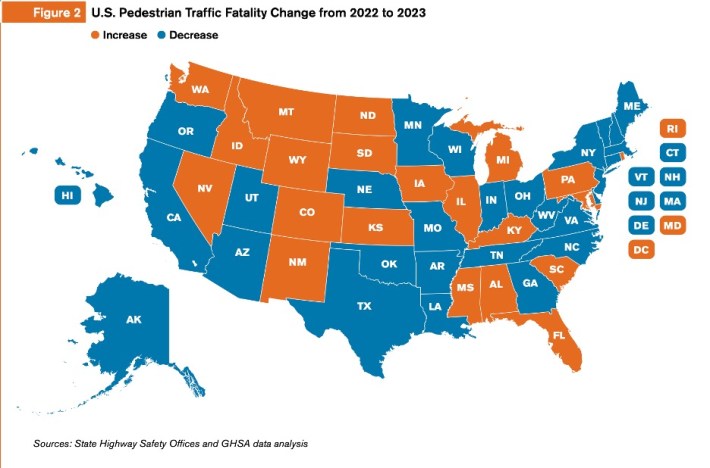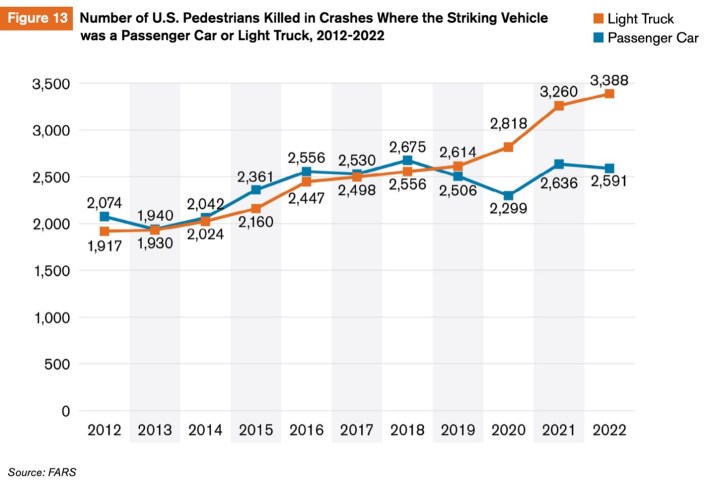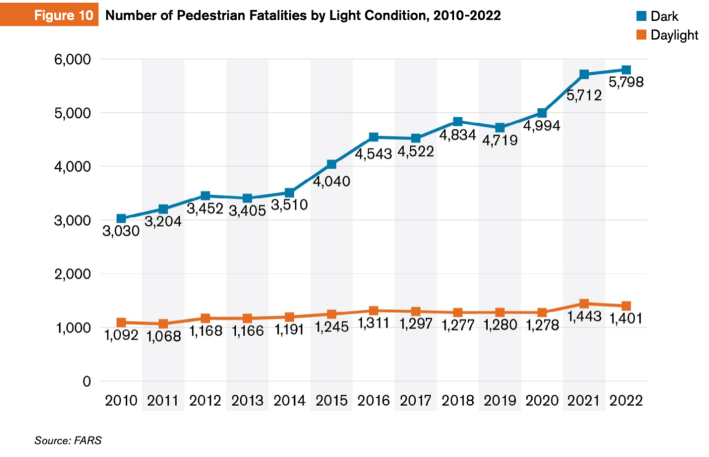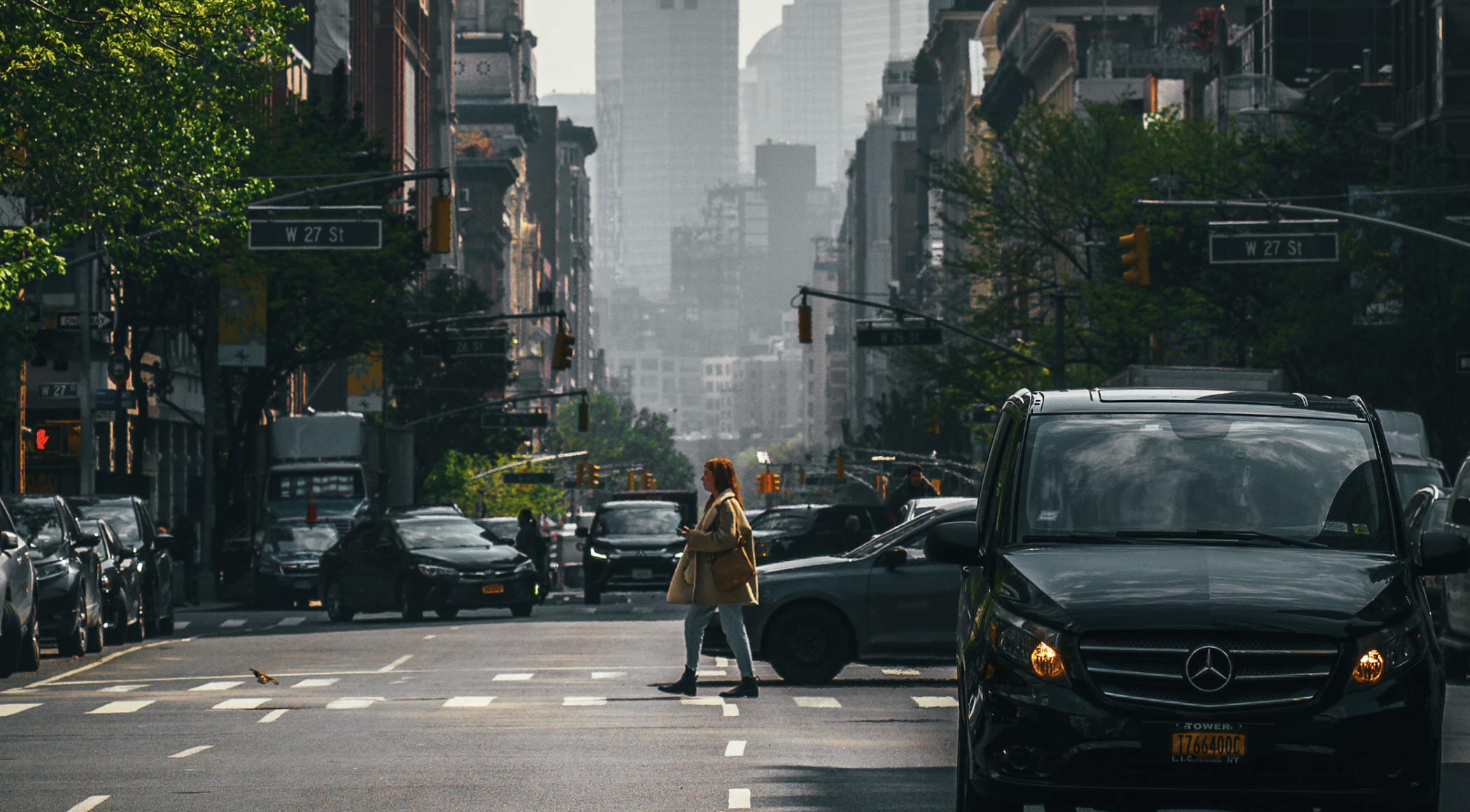U.S. pedestrian deaths are significantly down for the first time in years — but safety experts aren't popping the Champagne just yet.
According to early estimates from a national nonprofit that represents transportation safety offices from all 50 states, U.S. pedestrian deaths fell 5.4 percent between 2022 and 2023. If that number proves accurate when federal officials release their final tallies later this year, it would represent the largest one-year decrease since 2009, and a stunning 419 saved lives.
But it's still a 14-percent increase over the death count of 2019, the last full year before the pandemic.
"My first reaction was, 'Hallelujah; it’s really nice to be talking about fatalities going down, because we haven’t really had that conversation in a long time,'" said Jonathan Adkins, CEO of the Governors Highway Safety Association, which released the report. "We’re still well above where we were in the pandemic, and well above where we need to be. But at least we have a much better story tell: more people are getting home safely."

But Adkins stressed that the Association isn't going to "throw a party" over 7,318 preventable deaths. For one, other research suggests that pedestrian activity itself might be down far more steeply than pedestrian deaths, with one big mobility data company reporting a 36-percent decrease in walking trips nationwide between 2021 and 2022. If that trend continued into 2023, it could mean that the rate of pedestrian fatalities per journey is actually rising sharply.
There's also the open question of how many lives were "saved" by hard-to-predict phenomena, like historic rates of extreme weather that may have encouraged Americans to stay home rather than take a stroll.
"Fewer people dying is always good news, but I don't want to just be a cheerleader," Adkins added. "It's just one year; we have a long way to go, and we're still significantly higher than we were. Until we have a better sense of what happened, we won't have a good sense of which factors are repeatable. ... And when we’re still up 14 percent from pre-COVID, that’s still a lot of people needlessly dying."

Many of the well-known factors driving the pedestrian death crisis, meanwhile, appear to be getting worse even as overall fatality trends improve.
In a more granular analysis of 2022 data that accompanied the new estimates, the Association found, perhaps predictably, that the drivers of "light trucks" like SUVs and pick-ups, are involved in an increasing percentage of walker deaths, rising from 43.8 percent in 2012 to 59.1 percent 10 years later. The report authors blamed that rise on "vehicles with higher front ends and blunt profiles [that studies show are] are 45 percent more likely to cause fatalities in crashes with pedestrians than smaller cars and trucks," and an absence of vehicle regulation to rein in those deadly design features.
Meanwhile, a stunning 77 percent of U.S. walkers lost their lives after dark in 2022, up from 73 percent in 2010 — potentially signaling that factors like poor road lighting, increasing nighttime hit-and-runs, and other systemic variables unique to nighttime crashes aren't being adequately addressed. And the share of walkers who died on roads with no sidewalks rose, too, from 59 percent in 2017 to 66 percent last year.
"We don’t need research to know that we need more sidewalks; clearly there’s not appropriate infrastructure in place [everywhere that people are walking]," added Adkins. "But people don’t always have the choice [to avoid roads without infrastructure.] If you’ve got to get to work and you’re getting there on foot, whether there’s a sidewalk or not, you’ve gotta get there."

Despite these asterisks, though, Adkins says many communities are actually saving lives the right way: by embracing the principles of the Safe Systems approach and building the safe roads and roadway policies that residents need. And if we want to keep driving deaths down, everyone else urgently needs to learn from their success.
California, for instance, recorded a stunning 13-percent drop in deaths, or 151 fewer lives lost, a victory Adkins argued is owed in part to a forward-thinking state highway safety office that's actively supporting local communities' bids for federal safety dollars. Even conservative North Dakota, he said, has recently embraced a version of Vision Zero that he says is "appropriate" for a heavily rural state, even if it hasn't translated to saved pedestrian lives quite yet.
If other communities can build on that momentum, Adkins is hopeful that the pedestrian death drop in 2023 won't just be a flash in the pan.
"Every life lost is important, and every life matters," he added. "But we do have to highlight things that are working, and we have to do more of them. We have to get more money into communities; we have to build more infrastructure, and have more public engagement. ... I travel all over country, and the conversation isn’t, 'Do we need safe systems?' anymore, it’s, 'How do we do it?' That’s a very different conversation than we were having five or 10 years ago."






